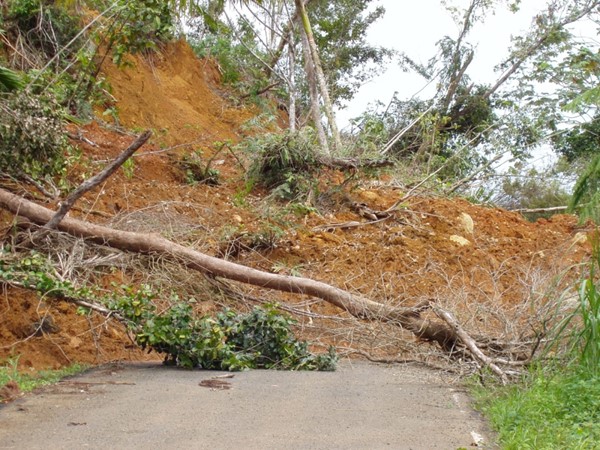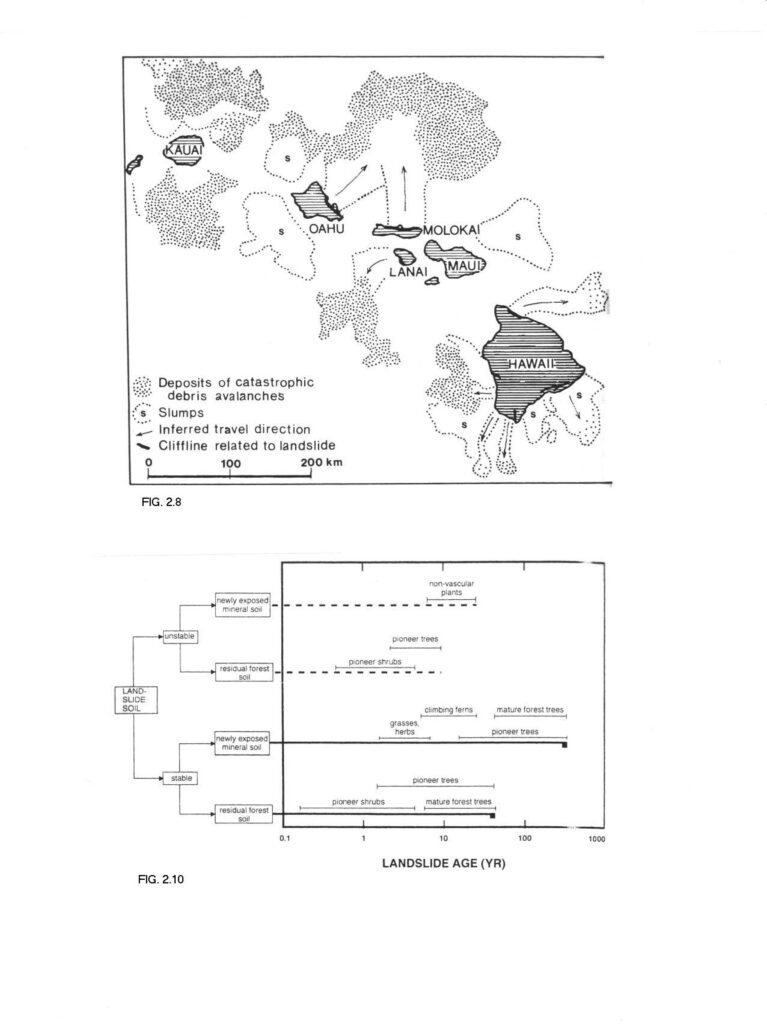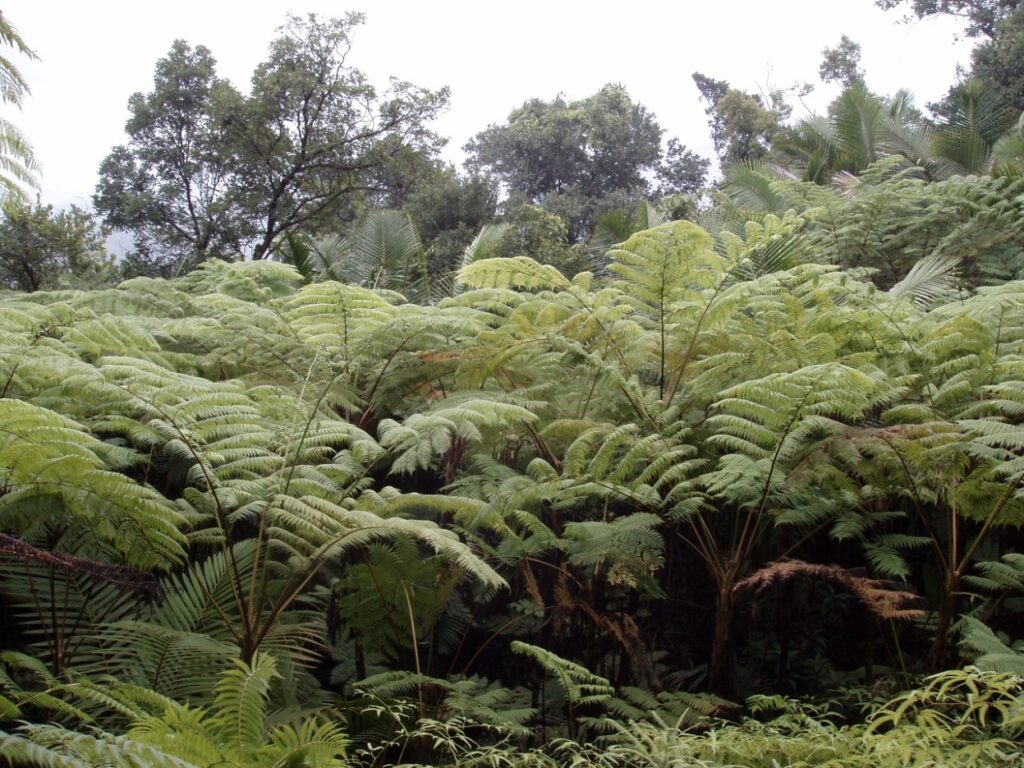By Lawrence R. Walker



The LUQ-LTER has sponsored research on landslides since 1988. In cooperation with the USGS, the University of Puerto Rico, the University of Nevada, and the USFS, researchers have explored the causes, predictability and stabilization of landslides. Rainfall intensity and duration are key predictors of landslides. Storms with a total precipitation of 100-200 mm, about 14 mm of rain per hour for several hours, or 2-3 mm of rain per hour for about 100 hours can all trigger landslides in Puerto Rico (Larsen & Simon 1993). Landslides in the LEF are more common in areas of quartz-diorite intrusions than areas with volcaniclastic rocks. Over half of the landslides in the Luquillo Experimental Forest (LEF) in Puerto Rico are associated with the destabilization caused by roads (Figure 1). Approximately 1-7% of the forested landscape in the LEF is affected by landslides per century, depending on the steepness of the region. Similar values are found throughout the Caribbean (see our article on Disturbance and Recovery). Puerto Rican landslides often fit the generalized pattern of landslide zonation, with a near-vertical slip face at the top, a narrow chute and a lower deposition zone. Resultant gradients in soil organic matter and substrate stability (often highest in the deposition zone) create comparable gradients in recovery of the vegetation. Succession is generally much faster and plant biomass greater in the deposition zone than in the chute or on the slip face (Walker et al. 1996). Tropical landslides, including those in Puerto Rico, revegetate within a remarkably short time, provided there exists a stable substrate (Figure 2). When ample nutrients are also available, forests recover most characteristics of pre-disturbance forests within 100 yr. Plant succession on landslides is governed by slope stability and nutrient availability. Nutrients are supplied mostly from plant growth or decomposition of vegetation mixed into the landslide or falling subsequently from secondary uphill erosion. Vascular nitrogen-fixing plants are rare. Infertile substrates are colonized slowly by vegetative expansion of climbing ferns (Gleicheniaceae) from landslide edges.
These thicket-forming ferns inhibit establishment of tree species (Walker 1994) but stabilize the landslide surfaces. The thickets are inadvertently perpetuated by road crews that use fire to clear roadside vegetation. Fertile substrates are colonized by a suite of woody pioneer species (e.g. , Cecropia, Miconia, Palicourea, Piper, Schefflera). Later successional forest trees invade the stands of pioneer species, but it is unclear whether their later appearance is due to less mobile seeds or requirements for shade or nutrient build-up under the pioneers, or if, in fact, their seedlings do appear but are less apparent because of slower growth rates.
Biological processes that lead to succession and stabilization include inputs of seeds by wind, gravity and birds; vegetative expansion of neighboring plants; and the competitive and facilitative interactions of colonizing plants (Walker and Shiels 2013). Soil nutrient pools in exposed mineral soils reach pre-disturbance levels within 55 yr, but soil organic matter develops more slowly. Landslides will always be common on steep slopes in areas of high rainfall, but human activities such as construction of houses and roads have increased landslide frequency. Efforts to understand and accelerate successional processes will mitigate damage from existing landslides, but landslide prevention is preferable. Attempts to stabilize landslides include physical barriers to slow erosion, plantings to stabilize soil surfaces, fertilization to promote plant growth, and artificial perches to encourage bird dispersal of seeds. Soil development and enrichment are also key factors in the eventual stabilization and recovery of landslides.
Landslides cover a small proportion of the LEF but are important centers of biodiversity as they provide temporary refuges for pioneer species not found elsewhere in the forest. Landslides also provide a downhill migration of nutrients and soil organic matter across the landscape. This process releases minerals from the underlying substrates and mixes them with topsoil and buried plant parts.
Current work in the LUQ-LTER on landslides focuses on understanding the successional roles of seed inputs and plant colonists. Additional work is needed to further understand nutrient inputs and outputs, plant/animal interactions such as herbivory, and the larger role of landslides in landscape issues such as dispersal, biodiversity and carbon cycling (Shiels and Walker 2013).
